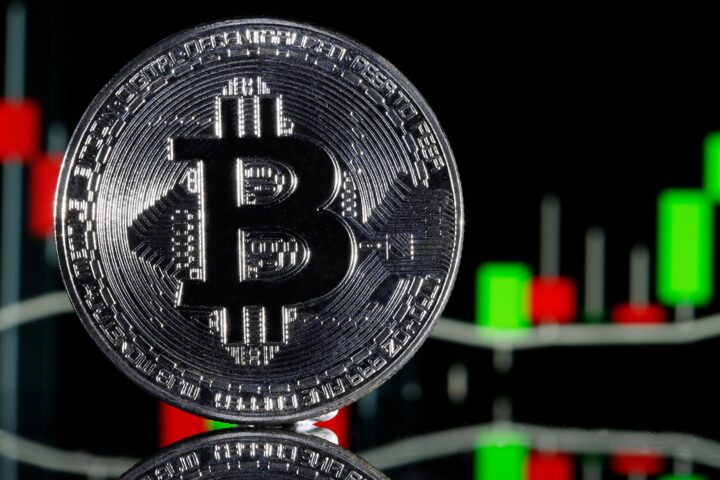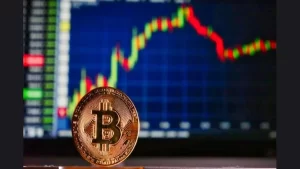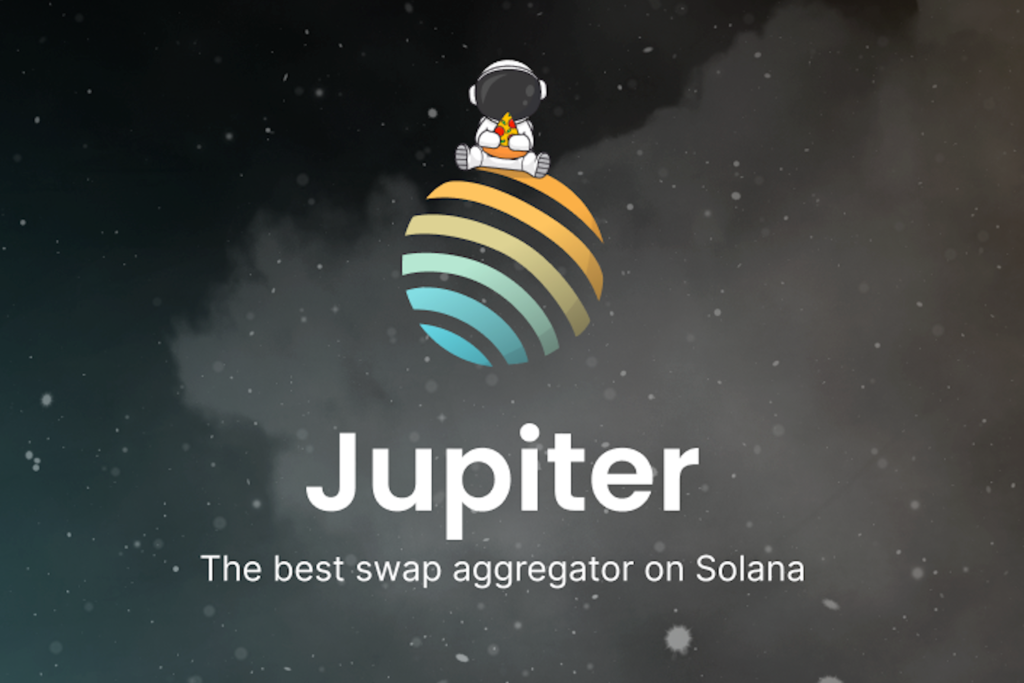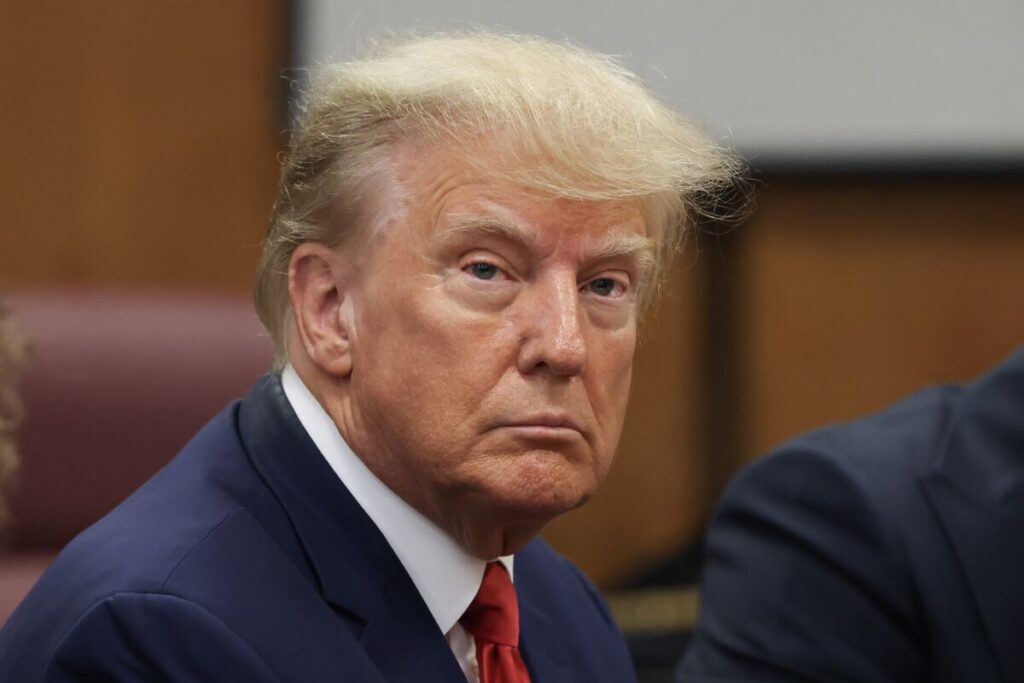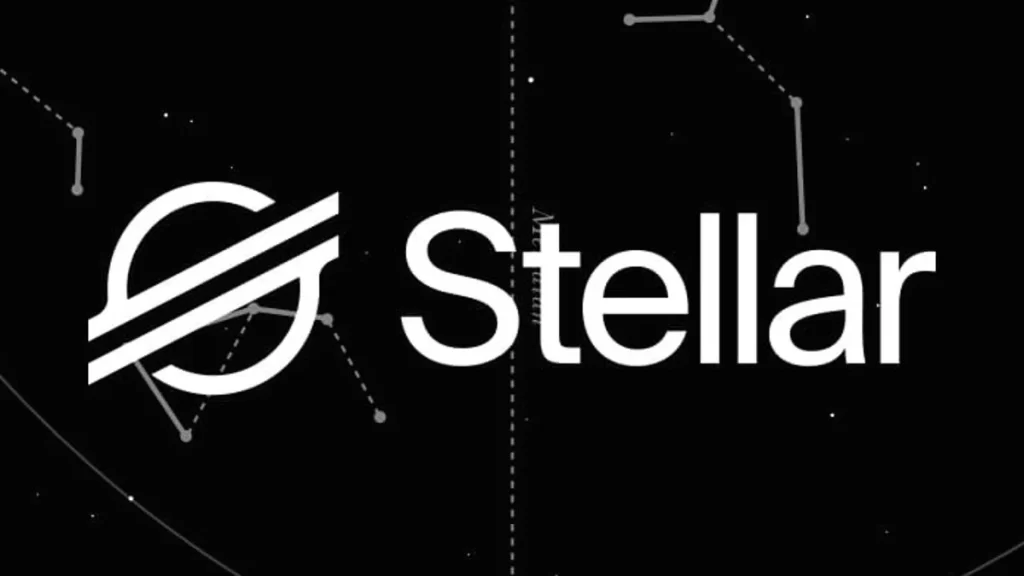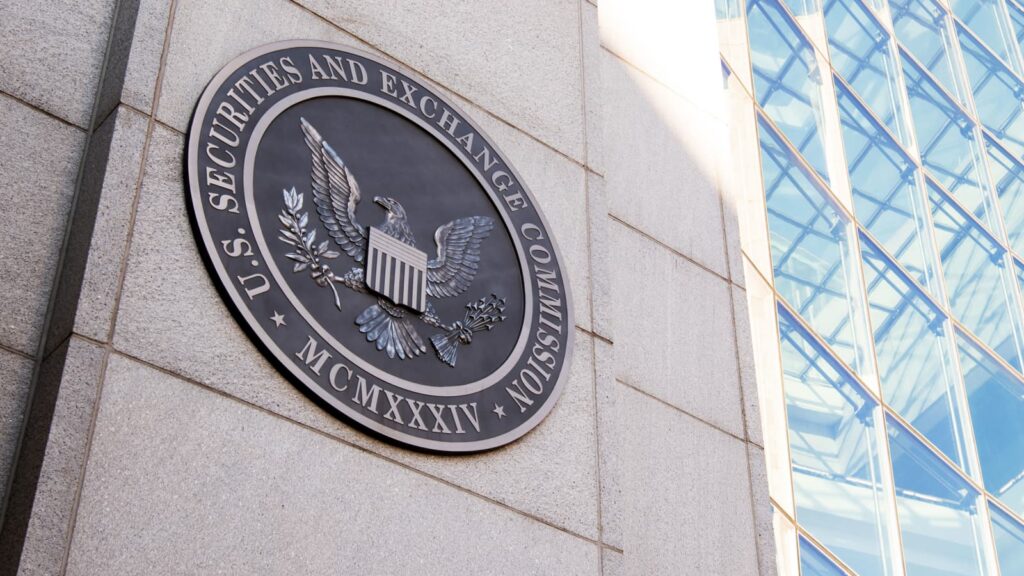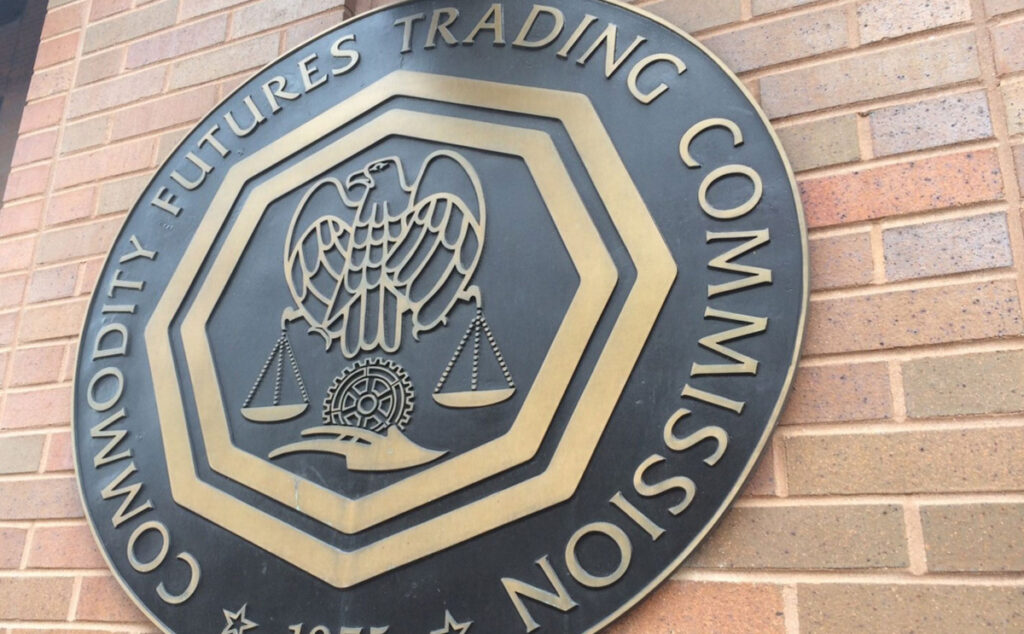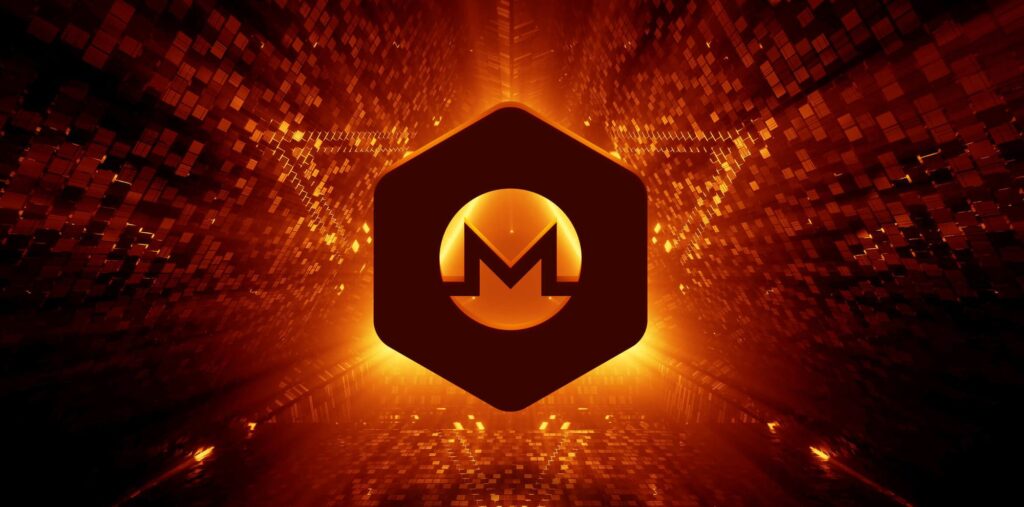Trading volumes on the Solana-based decentralized exchange, Jupiter, have surged to an impressive $480 million in the past 24 hours.
This surge in activity can be attributed to the high demand for a new memecoin airdrop and increased stablecoin swaps.
Jupiter’s trading activity has surpassed that of Uniswap, a popular decentralized exchange on the Ethereum network, by $10 million.
The combined trading volume of both Uniswap’s v2 and v3 protocols in the last 24 hours amounted to only $470 million, according to CoinGecko data.
Of the $480 million in daily trading volume, approximately $50 million was generated from the trading of Wen, a new memecoin.
Wen could be claimed by any Solana user who had interacted with Jupiter within the last six months, as well as by owners of Solana’s Saga phone.
Jupiter’s developers introduced Wen as an experimental precursor to the highly anticipated airdrop of the exchange’s native token, JUP, scheduled for launch on January 31.
READ MORE: U.S. Lawmakers Push for Deepfake Image Criminalization in Wake of Taylor Swift Scandal
The majority of the trading volume on Jupiter over the past day was attributed to the exchange of Solana for USD Coin and Tether, amounting to $191 million of the total daily volume.
As of the current moment, pre-market JUP tokens are trading at approximately $0.61, based on data from perpetuals traded on the decentralized exchange Aevo.
The estimated total value of the upcoming 1 billion token JUP airdrop could exceed $600 million at current prices.
This surge in market activity surrounding Wen and JUP coincides with a wave of recently announced airdrops within the crypto ecosystem.
On January 25, AltLayer, an Ethereum scaling solution, unveiled plans for a $100 million airdrop to its users.
Additionally, Dymension, a multilayer rollup deployer, is preparing to launch its mainnet in the coming days, offering a total of 70 million DYM tokens as an airdrop to eligible users, valued at approximately $210 million at pre-market prices.
Robert F. Kennedy Jr., the trailblazing presidential candidate, has made headlines by becoming the first to accept Bitcoin for campaign donations. Kennedy has now aligned himself with his rival,
Donald Trump, in a shared commitment to combat the development of a central bank digital currency (CBDC) within the United States.
Taking to social media on January 24, Kennedy released a snippet of his interview on X, where he engaged in a discussion about the potential dangers posed by a CBDC.
This conversation featured Joseph Mercola, a well-known advocate for alternative medicine, who has advocated for unconventional treatments for COVID-19. Mercola hosts a popular podcast named “Take Control Over Your Health.”
In a brief one-minute video, Kennedy raised alarm bells about the implications of a CBDC, suggesting that it could enable the government to monitor every single financial transaction made by citizens.
He argued that this surveillance capability could lead to potential blackmail or undue pressure on individuals, emphasizing, “It [a CBDC] is a calamity for human rights and for civil rights.”
Drawing parallels with China, where the “digital yuan” is already in circulation, Kennedy pointed out that it is intertwined with an extensive social credit system.
READ MORE: US Regulators Issue Cautionary Crypto Warning: Beware of Overhyped AI Trading Bots
According to U.S. politicians, this system allows the government to restrict access to an individual’s funds based on surveillance camera detection of non-compliance.
Kennedy pledged to halt any progress towards implementing a CBDC if he were to assume the presidency, vowing to preserve the use of paper cash. He also highlighted that Bitcoin provides better protection for individuals compared to cash.
Notably, another presidential contender, Donald Trump, has unequivocally promised on two occasions that he would never permit a CBDC in the United States.
Despite making critical comments about Bitcoin during his tenure as president, Trump’s former Republican Party rivals, Vivek Ramaswamy and Florida Governor Ron DeSantis, have adopted pro-crypto and anti-CBDC stances in their own presidential campaigns, ultimately endorsing Trump after exiting the race.
Kennedy, who departed from the Democratic Party in October 2023, continues to work towards securing inclusion on state ballots.
Notably, party ballot access demands fewer voter signatures than running as an independent candidate.
As of January 2024, he has indicated his openness to potentially running as a Libertarian Party candidate, further solidifying his stance against the introduction of a CBDC in the United States.
Blockchain security company PeckShield has released data summarizing losses from hacks and scams in 2023, revealing a total loss of $2.61 billion, excluding multichain incidents.
This figure represents a 27.78% decrease compared to the previous year when global cyber thefts amounted to approximately $3.6 billion.
PeckShield’s report, published on January 29, 2024, also highlighted that over $674 million was recovered from more than 600 large-scale hacks they monitored, accounting for 25% of the stolen cryptocurrencies.
This recovery amount marked a significant increase from 2022 when only around $133 million was recuperated from hacks.
The security firm attributed this improvement to more active negotiations with hackers and the emergence of bug bounty programs.
According to the PeckShield team, engaging in active negotiations with hackers and implementing bug bounty programs or on-chain investigations to identify vulnerabilities can enhance security and lead to the return of stolen funds.
Collaborating with centralized exchanges, Tether, and law enforcement to freeze funds whenever they are detected can also contribute to fund recovery.
READ MORE: Tesla’s Bitcoin Sales Cost Company Over $300 Million in Potential Profits
Aside from recovery statistics, PeckShield highlighted various data points, including flash loans, decentralized finance (DeFi), and the volume difference between hacks and scams. Among the hacks in 2023, 40% were flash loan attacks.
Despite improvements in DeFi security, PeckShield emphasized that DeFi remained a prime target for hacks and scams.
CertiK co-founder Ronghui Gu noted the positive developments in blockchain security, citing the growth of bounty platforms and proactive security measures as encouraging signs for the year.
However, PeckShield pointed out that 67% of the losses in 2023 occurred in the DeFi sector, while 33% were in centralized finance.
Hacks accounted for 58% of the losses, with scams contributing to the remaining 42%.
Malicious actors also diversified their crypto targets.
From 2018 to 2021, Bitcoin dominated illicit transaction trading volume, but in 2022 and 2023, stablecoins began to take a larger share of the illicit transaction volume, signaling a shift in the crypto landscape.
On January 27, Bitcoin remained steady at approximately $42,000, instilling confidence in traders due to recent price gains towards the end of the week.
Market data from Cointelegraph Markets Pro and TradingView revealed the usual calm weekend price movements, with $41,800 as a focal point.
The preceding day had witnessed a 5% increase in Bitcoin’s value, marking an improvement in market conditions compared to previous weeks, as reported by Cointelegraph.
Several recurring factors continued to capture the attention of investors, including the outflows from exchange-traded funds (ETFs), selling pressure stemming from defunct exchanges like FTX and Mt. Gox, and the impending block subsidy halving.
In a recent YouTube update, Michaël van de Poppe, the founder and CEO of MN Trading, expressed his belief that the current correction in Bitcoin’s price had come to an end.
He anticipated that, leading up to the halving in April, Bitcoin would experience a climb to its long-term range highs, with the possibility of encountering liquidity in the mid to low-$30,000 range before this ascent. He speculated that there might be one more rally to reach $48,000 before a final correction.
READ MORE: Crypto Analyst Urges SEC to Rethink Licensing Requirements for Local Exchanges
Van de Poppe also posited that over time, the negative impacts of FTX, Mt. Gox, and GBTC maneuvers would diminish in significance.
He suggested that Bitcoin was likely to consolidate in the range of $37,000 to $48,000 in the coming months, during which Altcoins might gain momentum.
Furthermore, he projected that the ETF’s real impact on Bitcoin’s price would materialize in the next few years, potentially driving it to a range of $300,000 to $500,000.
However, not everyone shared the same optimism, as some analysts believed that Bitcoin could still face a potential return to $30,000 or even lower in the months ahead.
For shorter timeframes, Rekt Capital, a well-known trader and analyst, emphasized the significance of the upcoming weekly close.
He noted that Bitcoin had displayed a favorable response during the week, gradually positioning itself to reclaim the lost range.
He suggested that a weekly close above the critical level of approximately $41,300 could potentially salvage the range.
The Stellar Development Foundation (SDF) has announced a delay in the smart contract upgrade for the Stellar blockchain, with the upgrade now scheduled for the end of January.
The delay is due to the discovery of a bug in Stellar Core v20.1.0 by the SDF’s development team.
In a blog post dated January 27, the SDF explained its decision to delay the Protocol 20 vote, originally set for January 30, in order to address the bug.
While the foundation characterized the bug as posing “little risk,” it acknowledged that it had the potential to impact various applications.
The SDF reassured the community that a fix is already in progress and is expected to be available within two weeks.
However, it emphasized that the decision to proceed with the network upgrade ultimately rests with the SDF.
Non-SDF validators on the Stellar network still have the option to vote in favor of the Protocol 20 upgrade on the original date.
The SDF stated, “If validators opt to postpone the upgrade, we will coordinate to determine a future vote date once a new version of Stellar Core that contains a bug fix is released.”
Regardless of the outcome, the SDF committed to resolving the bug and engaging in discussions with other validators through both public and private channels.
READ MORE: Tesla’s Bitcoin Sales Cost Company Over $300 Million in Potential Profits
For the Protocol 20 upgrade to pass, it requires a quorum of voting validators. As of December 2023, there are 43 validator nodes, according to Stellarbeat.io.
The bug in question relates to Soroban, a smart contract platform that was introduced on a Stellar testnet in October 2022.
When a “Soroban” transaction request is made, it results in a refund and is fee-bumped. However, under the current code, the refund is not sent to the fee-bump’s source account as intended.
Tyler van der Hoeven, one of Stellar’s core developers, mentioned in a January 26 post that Protocol 20 will be rolled out in phases, but did not specify the duration of the implementation process for Soroban smart contracts on Stellar.
Stellar, one of the oldest blockchain projects, primarily focuses on payments and asset tokenization.
The token powering the Stellar blockchain, known as Stellar, currently boasts a market capitalization of $3.2 billion.
The Hong Kong Securities and Futures Commission (SFC) has recently received its inaugural application for a spot Bitcoin (BTC) exchange-traded fund (ETF), marking a significant development in the cryptocurrency investment landscape.
Harvest Hong Kong, one of the largest fund management firms in China, officially submitted its spot Bitcoin ETF application to the Hong Kong SFC on January 26, as reported by Tencent News.
It appears that the regulatory body is actively striving to expedite the approval process for ETFs within the nation, with the aim of launching the first Hong Kong spot Bitcoin ETF shortly after the Chinese New Year, scheduled for February 10.
In a notable parallel to the United States’ Securities and Exchange Commission (SEC), the Hong Kong regulatory authority is contemplating the approval of multiple spot ETFs to ensure a fair and competitive environment.
Although Harvest Fund is the pioneer in filing for a spot BTC ETF, it is anticipated that other financial institutions in the region will follow suit.
Several regional financial entities have already expressed their interest in introducing a spot BTC ETF in the year 2024.
As previously reported by Cointelegraph on January 19, a minimum of ten financial institutions in Hong Kong are actively engaged in the process of launching a spot BTC ETF.
READ MORE: US Regulators Issue Cautionary Crypto Warning: Beware of Overhyped AI Trading Bots
Distinguished players in the financial sector, such as Venture Smart Financial Holdings, have already set their sights on the first quarter of 2024 as their target launch date for the spot ETF.
Furthermore, several crypto-oriented firms that have previously launched futures-based crypto ETFs in Hong Kong are also expected to join the queue for spot Bitcoin ETF applications.
Notably, Samsung Asset Management, which introduced the Samsung Bitcoin Futures ETF in 2023, has expressed its willingness to explore the possibility of launching a spot ETF, demonstrating the growing appetite for cryptocurrency investment products in the region.
Hong Kong has gained prominence as a leading cryptocurrency hub in Asia, owing to its regulator’s crypto-friendly stance in 2023.
The SFC introduced crypto-specific regulations in 2023, granting both institutional and retail investors the opportunity to engage in cryptocurrency-related activities.
Even before the SEC in the United States greenlit the first spot BTC ETF, the Hong Kong SFC had paved the way for cryptocurrency-based ETFs and expressed its readiness to accept applications for the authorization of various funds, including digital asset spot ETFs and existing crypto futures ETFs.
This move has solidified Hong Kong’s position as a key player in the global crypto investment arena.
The Hong Kong Securities and Futures Commission (SFC) has issued a warning to the public regarding the potential risks associated with investment products known as the “Floki Staking Program” and the “TokenFi Staking Program,” both of which are affiliated with the Floki ecosystem.
These products are marketed as offering staking services with promised annualized returns that range from 30% to over 100%.
However, it is crucial to note that neither of these products has received authorization for public sale in Hong Kong, as emphasized by the SFC.
Staking, a process that enables users to earn rewards by contributing to the security of blockchain networks, operates similarly to depositing money into a savings account.
Through the proof-of-stake mechanism, users validate transactions, thereby enhancing the security and decentralization of the blockchain.
The SFC has expressed concerns regarding the ability of the operators of these staking programs to deliver on the promised high annualized returns.
They have not provided a convincing strategy for achieving these ambitious targets.
In response to the SFC’s warning, the Floki team addressed the issue during one of their live spaces on X, formerly known as Twitter.
READ MORE:Adani Power Share Price
They mentioned that the SFC’s primary concern appears to be that their staking programs have been exceptionally successful.
While the team did not disclose specific details of their discussions with the SFC, they did clarify that they had collaborated with a marketing agency to promote the Floki Staking Program and TokenFi Staking Program, believing they had received approval for their initiatives.
However, they could not confirm whether the marketing campaigns would continue in Hong Kong and assured their investors that they would work diligently to meet all requirements with the local authorities.
On January 26, 2024, the SFC took action by including both the Floki Staking Program and the TokenFi Staking Program, along with relevant details, on the SFC’s Suspicious Investment Products Alert List.
The SFC has advised investors to exercise caution when engaging in staking deals involving digital assets, as these may fall under unauthorized collective investment schemes, which carry significant risks and offer limited protection under the Securities and Futures Ordinance, potentially resulting in complete loss of investments.
Furthermore, the SFC has reaffirmed its commitment to enforcing regulatory standards and protecting investors from fraudulent schemes.
It has made it clear that any violations of the law, including the promotion of unlicensed collective investment schemes, will be met with appropriate legal actions to maintain the integrity of Hong Kong’s financial market.
On January 29th, Google is poised to enact a pivotal policy update that will permit certain cryptocurrency products to be promoted across major search engines.
Among these products, Bitcoin exchange-traded funds (ETFs) are emerging as potential contenders that meet the stipulated criteria, igniting considerable excitement within the cryptocurrency industry.
This significant development traces its origins back to December 2023 when Cointelegraph first reported on Google’s impending revision of its cryptocurrency and related ads policy.
Effective January 29, this revision will enable advertisements from “advertisers offering Cryptocurrency Coin Trust targeting the United States.”
Coinciding with this policy shift is the recent approval of 11 spot Bitcoin ETFs by the United States Securities and Exchange Commission (SEC) on January 10.
Investors who choose to acquire shares in these spot Bitcoin ETFs effectively secure a stake in the ETF’s Bitcoin holdings.
Importantly, this aligns perfectly with Google’s updated requirements, which specify a focus on “financial products that allow investors to trade shares in trusts holding large pools of digital currency.”
Crypto analysts are buzzing with optimism regarding the potential influx of investments into Bitcoin ETFs, buoyed by Google’s formidable transaction processing capacity in managing search requests.
Recent data from DemandSage underscores the sheer magnitude of Google’s daily search volume, which stands at an astonishing 8.55 billion searches.
Nevertheless, it’s worth noting that Google’s policy update employs the somewhat nebulous term “cryptocurrency coin trusts” when referring to the permitted products, leaving some room for interpretation.
READ MORE: Crypto Analyst Urges SEC to Rethink Licensing Requirements for Local Exchanges
Meanwhile, a noteworthy development in the cryptocurrency landscape involves the Grayscale Bitcoin Trust (GBTC), one of the largest Bitcoin trusts.
Recently, it transitioned into a spot Bitcoin ETF, following approval from the SEC on January 10.
Previously, GBTC shares were exclusively available to accredited investors and were subject to a mandatory six-month holding period.
Accredited investors, under U.S. regulatory standards, are individuals with a net worth exceeding $1 million or an annual income surpassing $200,000 for the past two years.
These requirements are designed to shield less knowledgeable investors from potentially risky ventures that could lead to financial losses.
In contrast, spot Bitcoin ETFs are accessible to the general public in the United States and are regulated under the Securities Act of 1933.
This regulatory framework adds an extra layer of security, potentially making them a safer avenue for Google to explore in its advertising efforts.
The anticipation surrounding Google’s policy update has been building since August 2021, when prominent cryptocurrency trader Michael van de Poppe expressed optimism about the potential influence of Google ads on Bitcoin-related products.
This optimism has been further fueled by the SEC’s exploration and subsequent approval of Bitcoin Futures ETFs in October 2021, signaling a growing acceptance of cryptocurrency-related investment products in the mainstream financial landscape.
The United States Commodity Futures Trading Commission (CFTC) is actively seeking insights into how regulated entities can harness artificial intelligence (AI) within their compliance endeavors and other domains.
To facilitate this pursuit, the agency has issued a request for comments, aiming to enhance its comprehension of AI’s present and potential applications and the associated risks in derivatives markets.
The feedback collected from this initiative could wield significant influence over forthcoming CFTC guidelines, interpretations, policy statements, or regulations.
The CFTC’s inquiry encompasses a wide spectrum of AI applications, spanning trading, risk management, compliance, cybersecurity, recordkeeping, data processing, analytics, and customer interactions.
In the realm of compliance, the agency has particularly spotlighted AI’s potential role in enhancing surveillance, Anti-Money Laundering (AML) efforts, and regulatory reporting functions.
Rostin Behnam, Chair of the CFTC, expressed that this request for comments (RFC) will fortify the CFTC’s strategic identification of top priorities and projects with AI applications.
It is intended to optimize their data-driven approach to shaping policies, bolstering surveillance, and enforcing regulations.
The CFTC has aligned this RFC with the directives set forth by the Biden Administration, which emphasize the safe, secure, and trustworthy development of artificial intelligence. Interested parties have until April 24, 2024, to submit their comments.
Commissioner Kristin Johnson underscored the ongoing nature of the conversation within the agency, involving multiple departments such as Market Participant, Clearing and Risk, Market Oversight, and Data divisions.
She emphasized the pivotal importance of the CFTC’s comprehension of how market participants employ AI within the derivatives markets.
READ MORE: Polygon’s Meteoric Rise: Nearly Matches Ethereum’s User Base in 2023
Importantly, the RFC solicits opinions on the appropriate definition of AI, including whether it should be broadly or narrowly defined and where the demarcation should be drawn between AI and other existing automated trading strategies.
In September 2023, CFTC Commissioner Christy Goldsmith Romero advocated for updating protective measures with technological advancements to safeguard American investors.
She underscored the potential adverse consequences if these measures were not adopted.
As part of this commitment to enhancing investor protections, Romero appointed experts in fintech, responsible artificial intelligence, cryptocurrency, blockchain, and cybersecurity to the CFTC’s Technology Advisory Committee.
Simultaneously, the CFTC has issued a warning to investors against placing excessive reliance on artificial intelligence trading bots in the pursuit of substantial cryptocurrency profits.
The agency has identified those who promise extraordinary returns through the use of bots, trade signal algorithms, crypto-asset arbitrage algorithms, and other AI-assisted technologies as potential fraudsters, cautioning investors to exercise caution in this regard.
Finland’s National Bureau of Investigation (NBI) recently made a breakthrough in their investigation into Julius Aleksanteri Kivimäki’s criminal trial. Kivimäki stands accused of hacking a private mental health firm’s database and demanding ransom payments in cryptocurrencies, a case that has garnered significant attention.
Local reports indicate that prosecutors unveiled fresh evidence on January 22nd, revealing a crypto trail leading directly to Kivimäki’s bank account.
The hacker’s alleged extortion scheme unfolded in October 2022 when he demanded 40 Bitcoins in exchange for withholding the release of sensitive records pertaining to over 33,000 patients from the psychotherapy service provider Vastaamo.
When the ransom was not paid, Kivimäki purportedly escalated the situation by targeting individual patients.
Finnish law enforcement authorities assert that the hacker received payments in Bitcoin, subsequently funneling the funds through an exchange that lacked compliance with Know Your Customer (KYC) guidelines.
From there, Kivimäki reportedly converted the Bitcoin into Monero and transferred the proceeds to a dedicated Monero wallet.
Following these initial transactions, reports suggest that the funds were later sent to the cryptocurrency exchange Binance, where they were once again exchanged for Bitcoin and subsequently dispersed across different wallets.
It is crucial to note that the local authorities have maintained a veil of confidentiality regarding further details of their on-chain analysis.
READ MORE: Binance and SEC Legal Battle Intensifies Over Evidence and Witness Disputes
Monero, a cryptocurrency known for its robust privacy features, played a central role in this narrative.
The official Monero webpage touts its untraceability, thanks to technologies such as Ring Confidential Transactions (RingCT), ring signatures, and stealth addresses.
RingCT mingles users’ transactions, obfuscating the true source of funds, while ring signatures obscure the sender’s identity by presenting them as part of a group of potential senders.
Additionally, Monero’s stealth addresses enable the creation of one-time addresses for each transaction, making it exceedingly challenging to link multiple transactions to the same recipient.
This incident is not the first time that privacy-focused cryptocurrencies like Monero have come under scrutiny from regulators.
French authorities, led by Eric Woerth, the head of the Finance Committee in the French National Assembly, once proposed a ban on anonymous cryptocurrencies like Monero, citing concerns about their ability to provide complete anonymity and bypass identification procedures.
In a similar vein, United States authorities took a keen interest in Monero in 2020.
The Internal Revenue Service even offered a substantial bounty of up to $625,000 for anyone who could break the purportedly untraceable privacy coins.
Previous research also suggested that blockchain analysis could potentially trace back transactions involving privacy coins, including those that occurred before 2017.

